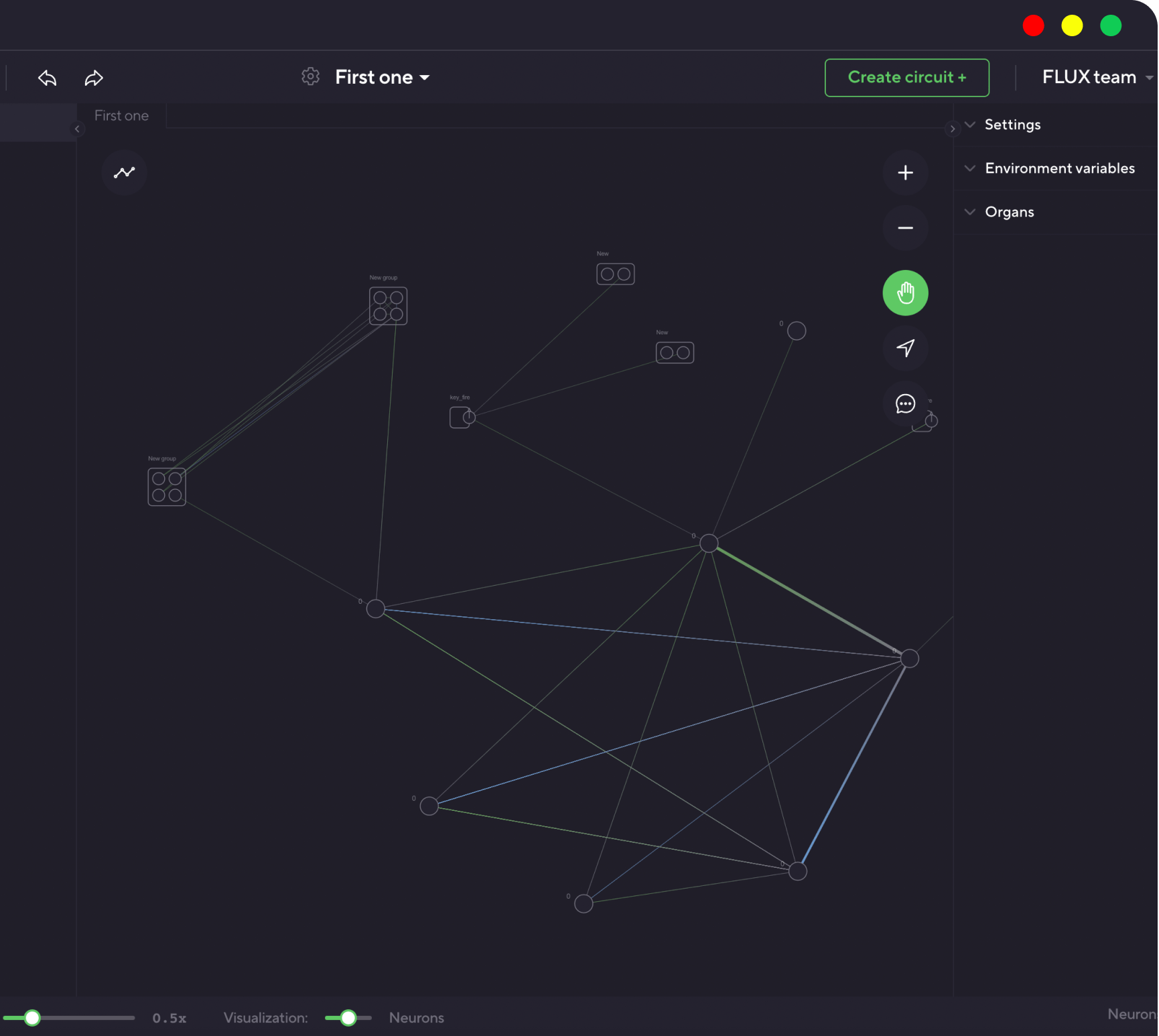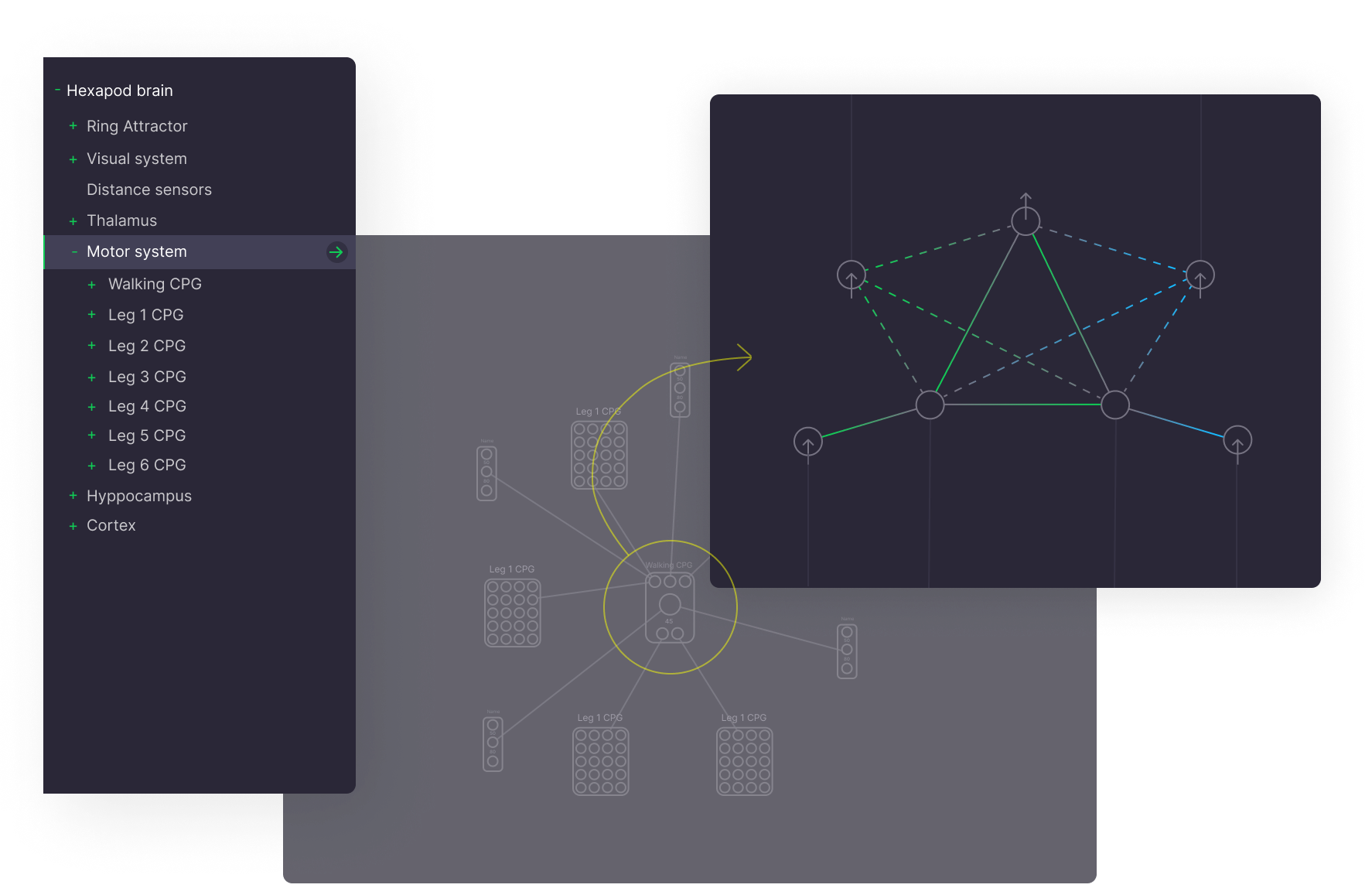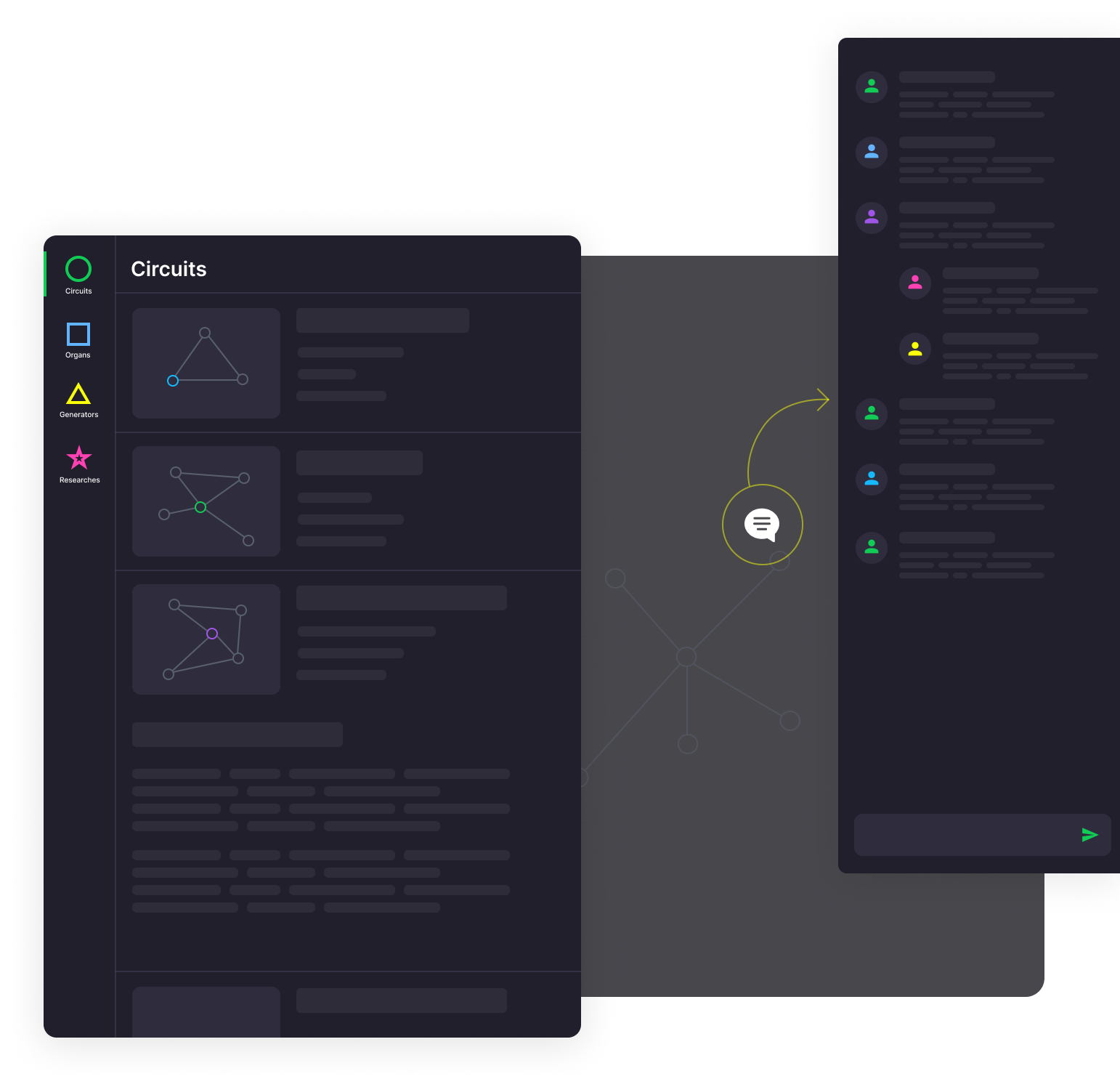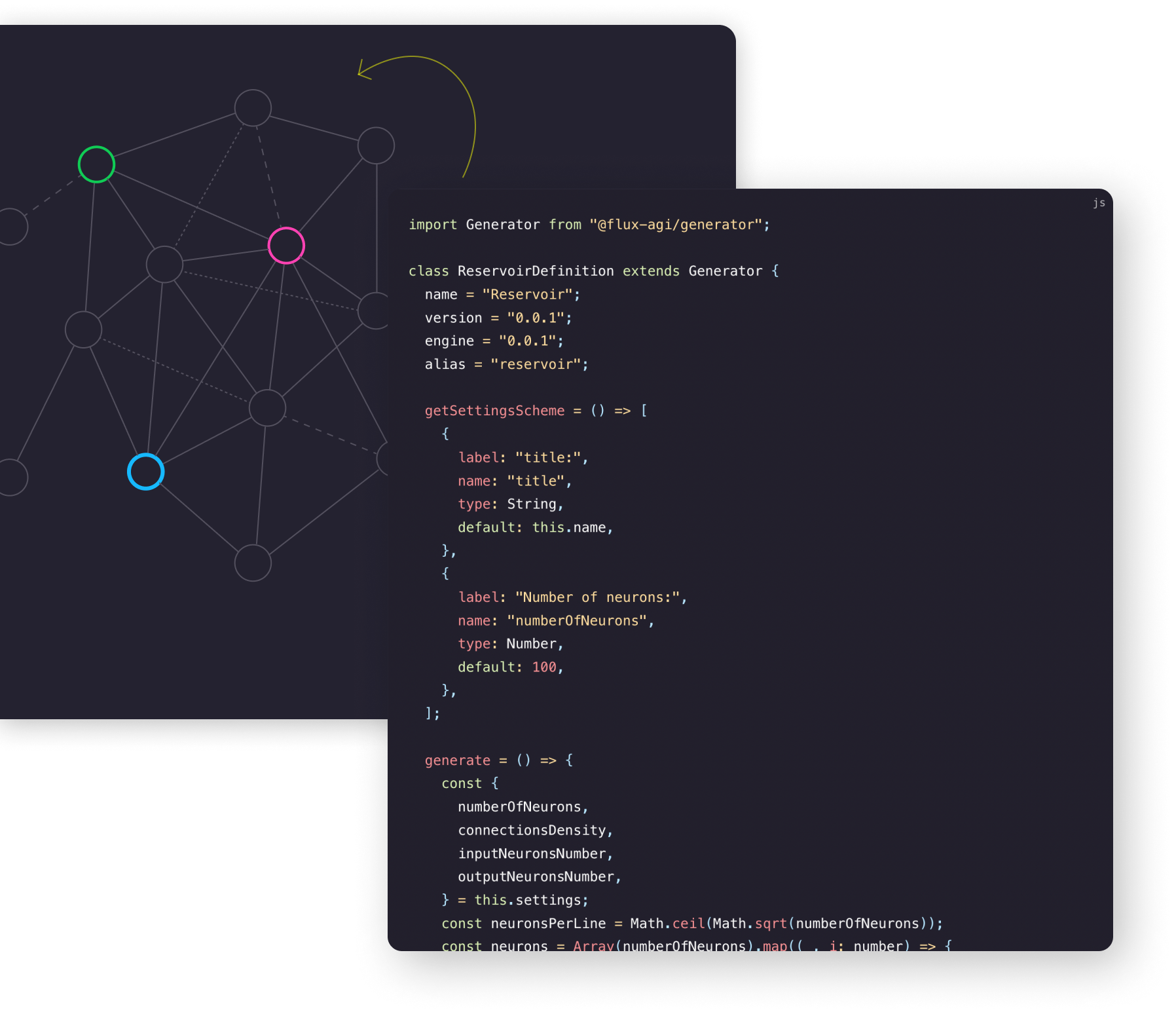Artificial Nervous System Engine
With web-based IDE and collaboration in mind
en
Neuronal model with modulation and constant learning
Perfect balance between biological accuracy and performance
Extensions for input, output, and off-circuit computations
Version control, forking, and sharing of components
Organize networks into the hierarchy of reusable components
Ecosystem of community components, comments, and discussions
150 people waiting to shake the tech
Flux aims to be a foundational technology for AGI, providing a performant framework and IDE for the new type of software, to power the new field of AI systems and robotics
Albert Kaygorodov
Founder, CEO
Full-featured web-based IDE to create artificial nervous systems of any complexity
- Intuitive interface
- Component based system design
- Real-time updates
- 3 levels of visualization
- Comments and threads

Neuromorphic neuronal model with modulation and Hebbian learning
- Modulated integrate-and-fire neurons
- Direct, Modulatory, and Electric synapses
- Support of single-spike and burst firing modes
- Neural adaption and potentiation
- Spike-timing dependent plasticity, modified by modulation
Component design approach: group, nest, and reuse network components
- Any level of nesting allows for deep component tree
- Group components to share features and changes
- Reuse networks as reusable components in other networks
- Fork public networks
- Use a full-featured version control system for your networks

Plugin system that allows for any sort of system extensions
- Engine API for low-level automation
- Plugins are packed as regular npm modules
- Intuitive programming API, inspired by React Comp
- Ability to create an interface for input and output
- Environment variables that get propagated to the network

Performant computational engine, able to handle systems of over 1 billion neurons on mass-market machines
- Optimal share of code between CPU and GPU
- Rust memory management
- WebGPU for neuronal computations
- V8 event loop to handle operations queue
- Natural system noise
Community and collaboration
- Leave comments right on the network interface
- Discuss the components in threads
- Share components with the community and fork others
- Markdown editor allows for creating vivid descriptions
- Share complete research with attached components
- Marketplace of components and researches

Generators for low-level automation
- Programmatically create networks based on user input via Engine API
- Share generators and use community generators
- Allows any level of automation of any process

Founders

Albert Kaygorodov
CEO, CTO
Worked as a tech lead in various international startups and enterprises for the last 5 years

Andrey Belkin
Head of AI
Electrical engineer and AI enthusiast. Author of Modulated Spiking Neuron network model

Danil Solomin
Full-stack developer
Experienced Javascript and Python developer with 7+ years of experience
FLUX gives rise to a new type of software, that is based on the way biological nervous systems work. This will revolutionize many industries
Andrey Belkin
Co-founder, Head of AI
1
Strong AI
Flux aims to reverse engineer intelligence, by following the evolutionary path of biological nervous systems. This gives developers all the components they need to create nervous systems of any size
2
Robotics
Flux radically changes the way robots are controlled, switching from procedural coding to artificial nervous systems, that constantly learn and adapt.
3
Internet Of Things
Imagine a world of interconnected intelligent devices, that work the same way as your brain does, that have only one goal: to make your life better
4
Cognitronics
Flux can power the new field of software that is programmed in a radically new biological way.
Timeline
December 2022
HBX-1 hexapod launch
Basic locomotion, obstacle avoidance, and learning
January 2023
Adding grouping and inheritance
Now components can be grouped and inherited, to build complex interconnected networks
February 2023
Add version control
Developers can commit and discard changes, use versioning, and create branches
March 2023
Moving logic to WebAssembly and WebGPU
All the computations are optimally split between CPU and GPU
April 2023
Digital hippocampus
HBX-1 is able to create space maps and use them for locomotion and interactions
May 2023
Private Beta
The editor is open to the early adopters, launching the feedback loop
June 2023
Macro-circuits protocol
Networks can connect with each other by FLUX P2P protocol, allowing unlimited horizontal scaling
July 2023
Launch of public beta
Opening FLUX ecosystem to all the developers worldwide.
Further
Further development
Ecosystem growth, feedback loop, paid features, cloud computing
150 people waiting to shake the tech
F L U X engine. 2022
All rights reserved